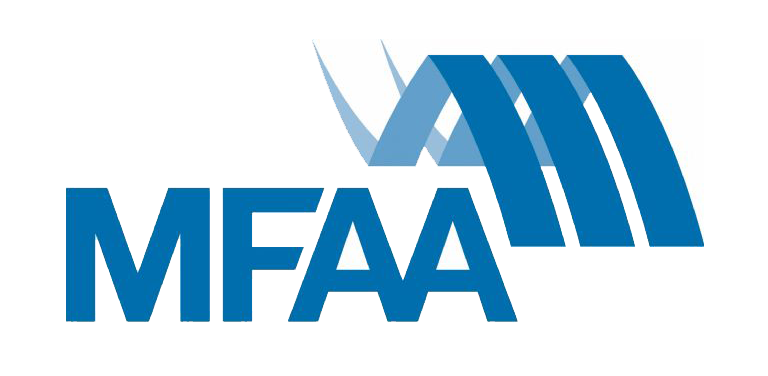
Having worked in the IT industry for over 5 years, I was in the thick of the “dot-com” boom and subsequent crash. It was amazing to see our suppliers frothing at the mouth after we purchased millions of dollars of their equipment. They were a never-ending source of hype; they told us we were going to be a billion-dollar company…we were the first in the world…we were bleeding-edge technology. We were going to float. We were going to be rich….And it never, ever, happened.
Why?
The thrust of technology and its marketing at that time was all about the technology and very little (if anything) about how the technology was going to benefit your business’ bottom line. To make matters worse, much of the marketing was based on fear; if you don’t use our technology, you’ll be left behind and your business will fail to remain competitive.
While much of the technology hype has disappeared with the dot-coms, vendors and suppliers are still keen to sell you their wares, unfortunately some still with inflated or possibly unrealistic returns. At least they are marketing the benefits to your business, instead of “technology for technology’s sake”.
Do my systems support my business objectives?
Since software systems are so critical to your business’ activity, the need to identify the real benefits of software solution investment is especially important. If the application is not providing you with increased revenues, or driving down the costs of your operations, what’s the point?
When considering a new software investment, you need to consider the following critical questions:
1. Will this investment enable me to increase revenues?
2. Will this investment enable me to reduce costs?
3. Will this investment enable me to serve my customers better?
4. Will this investment enable me to be more competitive?
Companies are gradually learning that software and applications are not a panacea. Aligning people, processes and systems is essential to achieving the expected return on your software systems investment.
Cracking a walnut with a sledgehammer.
We’ve all heard the familiar story; businesses spend tens of thousands of dollars on a software solution only to find that they could have solved their problem with a much more cost effective solution. This is commonly called the “cracking a walnut with a sledgehammer” syndrome.
This situation is usually a result of poorly defined objectives, trying to solve a “perceived” problem (rather than a real one), or just plain ignorance.
Take for example, CRM (client relationship management). CRM needs are specific to each business. Sure, there is commonality for a portion of key features, however beyond that it becomes subjective to the specific needs of the business, their industry, and the products/services they sell. Yet still, Newpath WEB continue to see businesses with CRM solutions that are totally inadequate for their needs, or are at the other end of the scale and total overkill.
MFAA members have varied requirements, but all seem to sing to the same tune and place a huge importance on productivity of their staff. Newpath WEB has found that the majority of MFAA members have a requirement (although some do not see it) for a decent CRM solution, that in some instances also plugs into a loan application and management system, allowing users to access company files, client information and documentation whilst both in the office, and offsite with a client or prospect. In implementing solutions like this, MFAA members have seen an increase in productivity and increased revenues from their staff having the ability to perform the majority of their job through a single, intelligent system, both in and out of the office.
Client Relationship Management (CRM) software is a key component in any business that wants to establish, build and track their client base. The Mortgage industry is as individual as it gets, requiring specific CRM software functionality in order to operate an efficient well-oiled sales and marketing operation. Sure, there are plenty of CRM packages in the market today, all sprucing they will do wonders for your business, but there are only a handful that truly meet the specific requirements of MIAA members across the board, and those are typically custom built.
Nathan Sinnott – Chief Executive Officer of Newpath WEB explains to us that his among the most important features when considering CRM applications are: functionality, ease of use, ongoing support, updates, initial cost of purchase and ongoing costs to maintain and update the software.
Nathan says “You would be surprised at the relatively small cost of having a bespoke application written for your business. A simple CRM solution can cost as little as $6,000 once off, with no ongoing fees, and will be custom to the needs of the business.
A key feature of a CRM solution for the mortgage industry is one that allows access to users out of the office. “Web based solutions cater for this extremely well” says Nathan, and are something to be seriously considered when investigating CRM solutions. “This way you can provide immediate access to information for clients in meetings, immediately process applications, or update client information”.
Loan application and management systems are unsurprisingly still a largely manual process, with a vast majority of companies performing this as a paper based process, which leads to an increase in errors. Not to mention the costs associated with paper based systems – paper, postage, storage, and the need for more staff.
Nathan explains “Newpath WEB has worked with a number of members in the industry to develop custom loan application and management systems that manage the application process, ongoing loan and client management, and relevant commission payments. These systems require significant input from the member business in the development phase in order to ensure their relevance, but once up and running they streamline process, reduce operational overhead and assist members in delivering quality and timely service to their customers, it really is a strong value proposition and key point of differentiation for the business”.
“Custom in house systems can help to connect staff, and customers with the information and resources they need. Users can create team workspaces, organise documents, and receive important notifications and updates through communication features including announcements and alerts”
Such a system will cater for enhanced document management capabilities, version control, and features to set document and item-level security.
Pricing will vary depending on specific needs, however the return from such a system will pay for itself many times over.
Website presence is surprisingly something many MFAA members do not have. Every company, regardless of size or business model, can benefit from a strategically planned web presence. A web presence includes a company’s entire web initiative from a corporate website and marketing on the Internet to Intranets/Extranets, web applications and promotional websites.
A web presence can begin with a simple five-page website and evolve into a complex web store or database-driven portal. “MFAA members can create online application forms, online loan tracking, online calculators, bill payments, newsletter subscriptions, and marketing and sales tools, just to name a few”.
Web initiatives should be integrated into business and marketing plans at every stage of growth. Regardless of initial budget, a web presence should be considered as a series of web projects and phases. Nathan Sinnott recommends firstly building the simplest, most cost-effective elements, beginning with what is most important to your customers.
Next you need to make the web site visible, otherwise no one will now how to find it. This means optimising your web site to be “search-engine friendly” so that it ranks highly in search engine results. Sounds daunting, but with the right approach you can start driving lots of traffic to your web site to supplement your more traditional sales activities.
Remember, your web site operates 24 hours a day, 7 days a week, while your office hours and “feet-on-the-road” selling is largely 8 hours a day, 5 days a week. People shop around and research their purchases after hours and on weekends. Make your web site work for you, and make it easy to find.
Boosting your web presence does not mean spending tens of thousands of dollars on flashy graphics and expensive technology. In fact it is better to keep the web site clean, professional and simple to navigate, provide lots of information, newsletters and “do-it-yourself” features. You guide and encourage your clients to purchase from you.
Conclusion
Software and application solutions are not as expensive as you may first think. If you compare the cost of implementing these solutions against the increased revenue, increased productivity or decrease in costs, these solutions should pay for themselves in a very short period of time.





